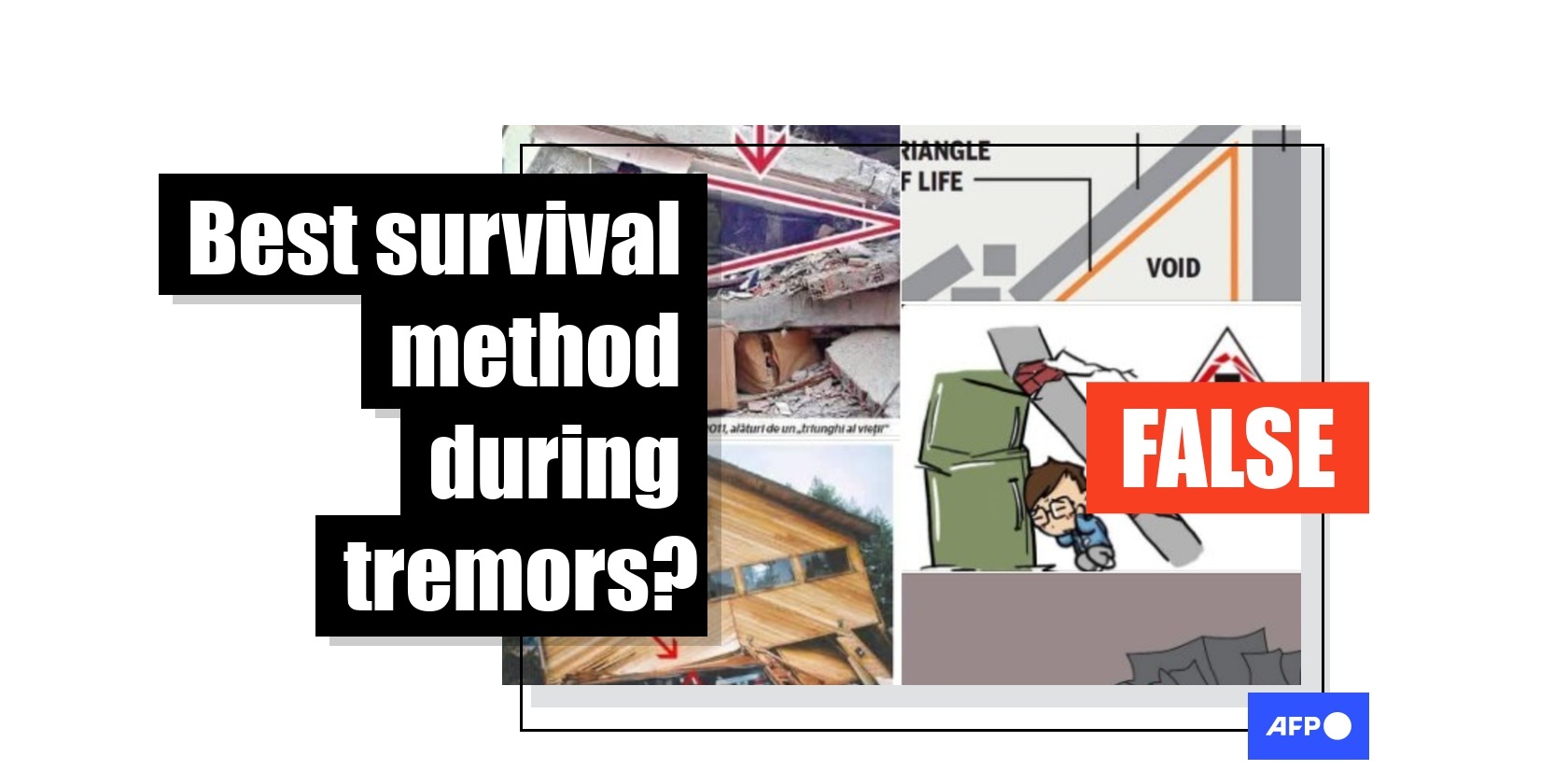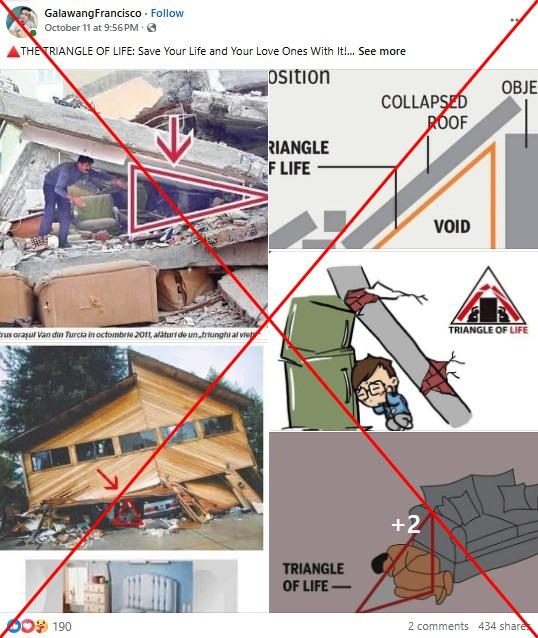
'Dangerous misinformation': Experts reject 'triangle of life' earthquake protocol
- Published on October 16, 2025 at 09:41
- 3 min read
- By Ara Eugenio, AFP Philippines
Experts worldwide agree that the "drop, cover and hold on" safety procedure is the best way to protect oneself from falling debris during earthquakes. They say widely shared claims touting a so-called "triangle of life" method -- hiding in triangular-shaped voids during a tremor -- are not supported by evidence and are dangerous.
"THE TRIANGLE OF LIFE: Save Your Life and Your Love Ones With It!" reads a Facebook post shared October 11, 2025.
It features multiple illustrations of people hiding near furniture such as couches or beds -- which supposedly form protective triangle-shaped "survival voids" when buildings collapse.
The lengthy caption challenges the standard "drop, cover and hold on" approach, instead offering an apparent excerpt from an article by Doug Copp, who is described as an experienced rescuer.
It claims Copp developed the "triangle of life" method after observing patterns in building collapses, and that a 1996 "scientific test" in Turkey allegedly proved his theory.
"Mostly everyone who simply 'ducks and covers' when buildings collapse are crushed to death," one of the listed tips reads.

Similar claims circulated widely on social media in the Philippines, drawing more than 30,000 shares following a series of deadly quakes that killed at least 83 people, triggered tsunami warnings and caused widespread destruction (archived link).
Earthquakes are a near-daily occurrence in the archipelago, which sits on the Pacific "Ring of Fire", an arc of intense seismic activity stretching from Japan through Southeast Asia and across the Pacific basin.
Multiple comments from users indicate they believed the advice could save their lives.
"Thank you, this is very helpful information," one comment read. Another said: "This is a proven-and-tested life saver over the years. Everyone should read."
'Misguided idea'
A representative for the Philippine Institute of Volcanology and Seismology told AFP the agency does not endorse the "triangle of life" method.
"The 'Triangle of Life' is based on conditions that do not accurately reflect what occurs during an earthquake, and following its advice could increase the risk of injury or entrapment," said Melissa Mae Garcia, a science research specialist at the agency, on October 14.
She said the method wrongly assumes that furniture and other large objects stay in place during strong tremors.
"In reality, earthquakes cause intense shaking that can move or topple heavy objects, making spaces around them extremely dangerous rather than safe."
The Philippine Red Cross separately told AFP on October 14 that the "triangle of life" is "dangerous misinformation".
"In the Philippines, as elsewhere, complete structural collapse or pancaking is not the most common outcome in modern or even many older buildings. The immediate danger is from falling objects," the agency said.
The Red Cross explained that strong tremors make it difficult to crawl or move safely, increasing the risk of being struck by falling debris before reaching any supposed "triangle".
It added that there is no way to predict where "survivable void spaces" will actually form during a collapse.
Both Phivolcs and the Red Cross reiterated that "drop, cover and hold on" -- locally also called "duck, cover and hold" -- remains the most effective and internationally recognised safety protocol during earthquakes (archived link).
It involves dropping onto one's hands and knees to protect from being knocked down, covering one's head and neck or crawling underneath a sturdy table or desk for protection, and holding on until the shaking stops.
Following these steps helps protect against falling and flying debris, which are the most common causes of injury during earthquakes.
The US Geological Survey similarly recommends "drop, cover and hold on" while describing the "triangle of life" as a "misguided idea" (archived link).
"Based on observations of an earthquake in Turkey, the idea doesn't apply to buildings constructed within the United States," it says.
AFP has previously fact-checked other false claims which circulated after earthquakes in the Philippines.
Copyright © AFP 2017-2025. Any commercial use of this content requires a subscription. Click here to find out more.
Is there content that you would like AFP to fact-check? Get in touch.
Contact us
